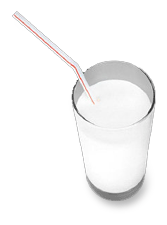
YOU CAN BUY THE RAW HONEY IN TAMIL NADU ,TRICHY(9940913814)
- Cancer Prevention - Honey is thought to be anti-inflammatory, antimicrobial, immune-boosting, and a healer of chronic ulcers and wounds, which are all areas involved in carcinogenesis (the beginning/creation of cancer).
- Heart Disease Prevention - lowers total cholesterol, LDL cholesterol, and triglycerides
- Athletic Performance - natural sugars give endurance and support speed
- Gastrointestinal Disorders and Ulcers - Honey is easily digested and counteracts stomach acidity.
- Cough Suppressant and Throat Pain - According to the Mayo Clinic, honey soothes the throat when mixed with tea or warm lemon-water. They also discovered that when two teaspoons of honey were given to children (older than one-year-old) before bedtime, nighttime cough was reduced.
- Eyesight - mixing 2 teaspoons of honey with carrot juice is suggested to improve eyesight that has been affected by long hours at a computer.
- Weight Loss - 1 teaspoon honey to about 2 teaspoons of lemon or lime juice every morning is said to speed up the metabolism or helps after large, greasy meals. It is also believed to help with cellulite.
- Impotence, Premature Ejaculation, and Involuntary Loss of Semen - Although it is not proven on humans and was used in an experiment on rats, honey was found to potentially increase testosterone and antioxidants. Recipe suggested: crushed onion fried in butter, mixed with 1 teaspoon of honey when stomach is empty over a couple of hours, or 1/2 teaspoon of ginger juice with a half-boiled egg and honey in the evening.
- Bladder Infection - 1 teaspoon honey with 2 teaspoons apple cider vinegar once a day. The honey is for it antibacterial, antiviral, and antifungal abilities and apple cider vinegar for the hostile environment (increased acidity) it creates, that bacteria does not thrive in. Also try 1 teaspoon of honey with 2 pinches of salt daily or 1 teaspoon honey and 2 teaspoons of ground cinnamon in 1 cup of warm water (cinnamon destroys bacteria in the bladder).
- Bronchial Asthma - An inhalation treatment made from honey and distilled water/saline solution. You must see a doctor for the inhalation method. With the inhaler, you can take 120 grams of honey three times a day before meals.
- Diarrhea - To prevent diarrhea when going on a trip,1 teaspoon honey with 1 teaspoon apple cider vinegar in a glass of water, one half hour before meals on days before the trip.
- Nausea - 1 teaspoon honey with 1 teaspoon lemon juice, drink slow or 1 Tablespoon crushed fennel seeds steeped in 1 cup boiling water for 10 minutes, adding honey for taste.
- Blood Sugar Regulation - Honey contains both fructose and glucose. Fructose helps glucose to be delivered to the liver. Glycogen is formed and used by organs such as the heart, red blood cells, brain, and kidneys. It allows organs to function better and for glucose to be removed, causing blood sugar to be lowered.
- Skin Wounds - When honey is mixed with water, it makes hydrogen peroxide, which is a mild antiseptic. It can be applied to cuts and wounds.
- Skin Growth - Raw honey applied to the skin can be used to promote new skin growth.
- Skin Health and Beauty - Honey contains mild Alpha Hydroxy Acids that encourage exfoliation of old skin cells, minimize lines and wrinkles, balance oily skin, increase elasticity, and stimulate the production of collagen. Apply honey to your face, as you would a facial mask. Leave on for approximately 15-20 minutes. Rinse off. Your face will feel soft and smooth! You can also add your own ingredients to the honey to enhance the exfoliation effect!
- Honey also improves blood circulation, reduces free radicals, and can reverse previous damage from free radicals.
- Finally, it holds moisture in the skin, so a honey mask will benefit the appearance of your facial skin.
***WARNING! I would like to mention, NEVER feed honey to an infant or child under the age of one-year-old. This is due to the risk of Botulism. These infants and children do not have an immune system that is developed enough to fight against the infection.
Additionally, the above recipes are suggestions. These recipes and directions should not replace seeing a doctor if you believe you have an illness. If you are diabetic, consult your doctor before using honey in your diet.


 How about taking a glass of sour milk and honey at the start of each day?
How about taking a glass of sour milk and honey at the start of each day?




